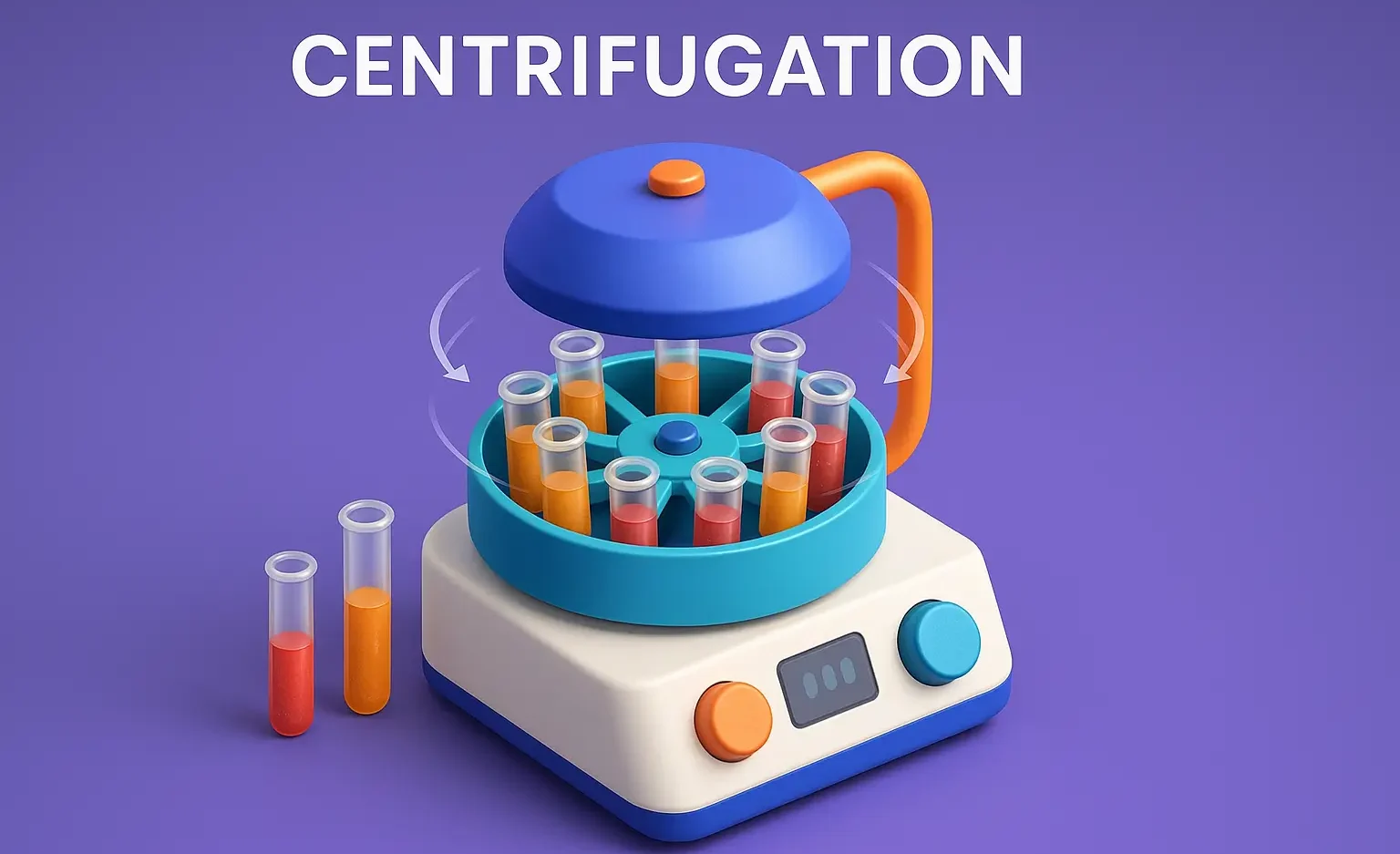Objectives of Centrifugation
- Separation of Components: To separate particles based on their size, shape, density, viscosity of the medium, and rotor speed.
- Purification: To purify biological samples, such as proteins, nucleic acids, cells, and sub-cellular organelles.
- Concentration: To concentrate particles, cells, or macromolecules from a solution.
- Isolation: To isolate specific components from a complex mixture for further analysis or use.
- Clarification: To remove suspended particles from a solution, thereby clarifying it.
Principle of Centrifugation
- Centrifugation operates based on the principle of sedimentation, where a force greater than gravity is applied to accelerate the settling rate of particles in a sample.
- When a sample is spun at high speed in a centrifuge, particles with different densities move at different rates:
Centrifugal Force:
Particles are subjected to a centrifugal force,
$F_c = m \cdot r \cdot \omega^2$
- m is the mass of the particle,
- r is the radius of rotation,
- ω is the angular velocity.
Sedimentation Rate:
- The rate at which particles sediment depends on their mass, the centrifugal force, and the frictional resistance they encounter from the medium they are suspended in.
- Particles with higher density or larger size sediment faster towards the bottom of the tube, forming a pellet, while lighter or smaller particles remain in the supernatant.
Applications of Centrifugation
-
Biological and Clinical Laboratories:
- Cell Separation: Isolating cells from blood or other body fluids.
- Fractionation of Subcellular Organelles: Separating organelles like nuclei, mitochondria, lysosomes, and ribosomes.
- DNA and RNA Purification: Isolating nucleic acids from cell lysates.
- Protein Purification: Separating proteins based on size and density.
-
Pharmaceutical Industry:
- Drug Development: Purifying drugs, vaccines, and other pharmaceutical products.
- Quality Control: Ensuring the purity and concentration of pharmaceutical preparations.
-
Food and Beverage Industry:
- Milk Processing: Separating cream from milk.
- Wine Clarification: Removing yeast and other particulates from wine.
-
Environmental Science:
- Water and Wastewater Treatment: Removing suspended solids and microorganisms from water samples.
- Soil Analysis: Separating soil components for analysis of contaminants.
-
Industrial Applications:
- Nanoparticle Separation: Isolating nanoparticles for use in various industrial processes.
- Oil and Gas: Purifying lubricants and other fluids.
Types of Centrifugation
-
Differential Centrifugation:
- Based on differences in sedimentation rates of particles.
- Commonly used for separating cells, organelles, and macromolecules.
-
Density Gradient Centrifugation:
- Uses a gradient medium (e.g., sucrose or cesium chloride) to separate particles based on density.
- Can be further classified into isopycnic (buoyant density) and rate-zonal (size and shape) centrifugation.
-
Ultracentrifugation:
- Uses extremely high speeds (over 100,000 rpm) for separating very small particles like viruses, ribosomes, and macromolecules.
- Requires special equipment and is often used in research settings.

